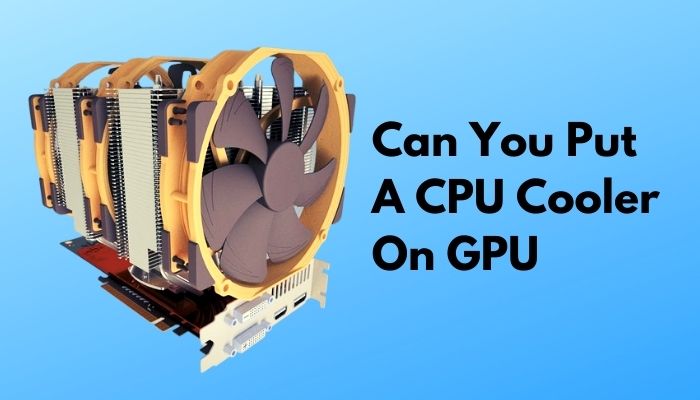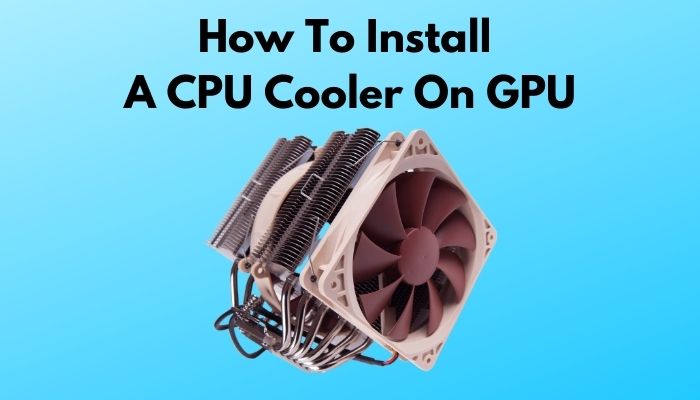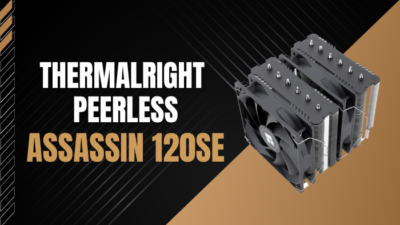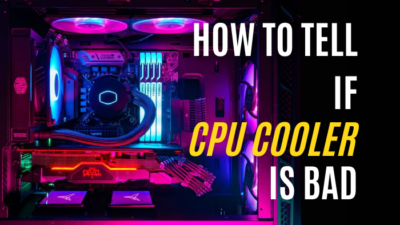Your GPU is suffering from performance issues and you are wondering whether using that spare CPU cooler on the GPU might be able to fix it.
Or maybe, you want to revive a dead GPU with the cooler?

Will a CPU cooler work on a GPU?
You just did yourself a great favor by coming here because I will outline everything you need to know about CPU coolers and GPUs. As someone who has done this sort of thing many times, I have a lot to share with you.
So, before you start reading, I must ask you to not get impatient and skip over a few parts because everything is connected. Also, grab yourself some coffee to relax.
Can I Install A CPU Air Cooler On A Graphics Card?
Well, technically, it should not be possible as there is no mounting bracket available to mount the CPU cooler onto the GPU. Moreover, the contact for heat transfer just wouldn’t be right. However, you can make it work but it won’t last for too long.
There is also a compatibility issue where if you don’t install the proper cooler then instead of seeing improvements in performance, you will probably see a rather intense performance drop instead.
I would recommend getting yourself a cooler that’s specifically made for your GPU if you want the best, most stable performance.
Another point to keep in mind is that the majority of GPUs on the market already have a cooler built in. If you already know this, you probably want the extra cooler because you want to push your GPU to the limit by overclocking.
Either way, the biggest challenge when installing a CPU cooler on a GPU is mounting it in a vertical case. Keep reading to find out the proper way to install a CPU cooler on a GPU.
How To Install A CPU Cooler On GPU

There are several important decisions you need to make if you are serious about making CPU coolers work with a GPU. You should also know that the stock heatsink doesn’t only cool the GPU. The VRAM and VRMs also need to be cooled.
You need to keep this in mind while installing the cooler as you have to find some way to make sure the VRAM and VRMs don’t overheat, especially if overclocking is on your mind.
You can drill and tap new mounting points into the heatsink or make a mounting plate which would be an ideal option to apply enough mounting pressure.
But before you start drilling, you need to check the GPU temperature and make sure that the graphics card is running hot. When you are certain, carefully follow the instructions below to install a CPU cooler on the card successfully.
Here are the steps to install a CPU cooler on a GPU:
- Remove the existing cooler from the graphics card. This should be fairly easy depending on your GPU. Mine only required me to remove 6 Philips screws from the back of the card.
- Now, the only thing holding your GPU together should be the thermal paste between the cooler and the GPU die so you can just simply pull up on the cooler.
- Remove two plugs from the back of your board. One for the fans and one for the RGB lighting if you have that.
- Remove the four or more standoffs from the cooler.
- Keep in mind that you will need to actively cool the VRMs so you need to make a custom heatsink which you should be able to attach to the PCB with the help of some double-sided thermal adhesive tape.
- Also, if you want to make a permanent installation, you should probably go for a lighter heatsink. You can still make use of this too.
- Now, that your graphics card is ready to accept the cooler, you need to reinstall all the standoffs and screws.
- Mount all the standoffs properly, you will have to make a slight modification to the mounting hardware that you get with the CPU cooler.
- Now comes the complicated part. Typically, you will get around 2 mounting brackets with the cooler. Basically, you need to make an extra 2 holes and the hole spacing should match the standoffs.
- Do not worry about your cooler or mounting brackets getting damaged as I assure you they will be fine. It’s best if you use a drill press to do it. Borrow one from a friend if you don’t have one.
- Install the mounting brackets onto the GPU.
- Now, you will be dealing with the riskiest part and you will need to be extra careful if your die doesn’t come with an integrated heat spreader when you are tightening your cooler down.
- Put a small line of a thermal compound onto your GPU.
- Then, you are going to line up your tower cooler while making sure that the screw holes align with the brackets.
- Start tightening it down but remember to keep it nice and slow. At most, do just half a turn at each side.
- Connect the fans to the cooler and you are all set.
You will notice at the end of all this that the graphics card doesn’t have much weight difference even after adding the cooler.
Another point I forgot to mention is that you need to check the size of the cooler towers and make sure that the modded GPU with the coolers will actually fit into your case. Otherwise, instead of saving money, you will end up spending most of it on another case.
As you can see, installing a custom cooler on a graphics card is a bit risky, but you get a much colder GPU. However, if you want to take a more risk-free approach to keep the temperature at an optimal level, follow our complete 7-step guide to lower the GPU temperature.
FAQ
Question: Does a cooler GPU perform better?
Answer: You won’t see an improvement at the same speeds but you do get the advantage of overclocking it much higher and that will give you some performance boosts.
Question: Is 83C ok for GPU?
Answer: It’s absolutely fine but it is definitely not the optimal temperature. Most GPUs would automatically downclock itself once it reaches around 82C.
Question: Why are my GPU temps so low?
Answer: This sort of issue usually happens when you are working with a CPU that is weak and simply cannot feed the required data to the GPU. You also need to monitor the CPU temperatures if you face this as it could be overheating and then throttling back.
Question: Is it normal for GPU fans to not spin?
Answer: Definitely not. Fans are always meant to spin so there must be something wrong. The typical culprit is the build-up of dust and debris as they have very low torque.
Question: Are CPU fans intake or exhaust?
Answer: CPU fans are mostly exhaust as they blow away the hot air from the CPU. However, there are a few dual fan CPUs that come with both intake and exhaust fans.
Question: How do I reset my GPU?
Answer: The simplest method to reset your graphics card back to default is to just uninstall the current graphics card driver. Your operating system will then automatically reinstall the driver and you will see that any GPU issues will be fixed.
Final Thoughts
Installing a CPU cooler on a graphic card is a very risky thing to do but when it is done right, it will definitely help you get that new shirt you always wanted.
If your performance is degrading after installing the cooler then the CPU cooler is not compatible and you should immediately remove it. In most cases, though, you won’t have to worry about compatibility.
If you face any other issues like these or if you need some information, just visit our webpage and you will definitely find the answer there.




